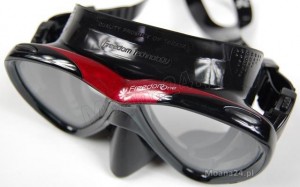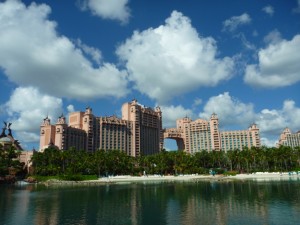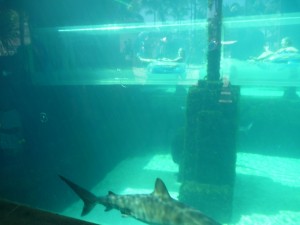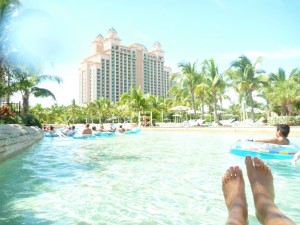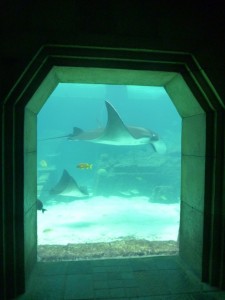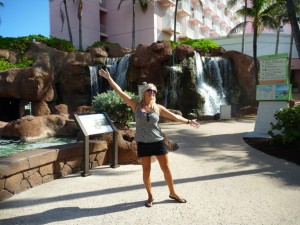Air, air, everywhere! I think it’s interesting to meet divers and non-divers of various levels and to listen to their interpretations of how scuba functions. I can’t tell you how many people refer to breathing the air from their tank as “breathing oxygen”, which is incorrect. In this section of the 5 part series on air and its relationship to diving, I’d like to offer a summary of what actually happens when you take a breath through a regulator underwater! If you’d like some other insights into air and its relationship to diving, please check out the other parts of my series here:
Understanding Air and its Relationship to 5 Key Areas in Scuba Diving
Part 1 – BCD Air Inflation/Deflation and Buoyancy: A Balancing Act!
Part 2 – Equalizing Your Ears: Let’s Get Popping!
Part 3 – Equalizing Your Mask: Don’t Squeeze Me!
Part 5 – Your Lungs & Scuba Diving: Easy Breezy Breathing!
Air and the Scuba Tank
Before I begin, here’s a little information about the air that is in your scuba tank. First of all, the air that we breathe underwater, is the exact same as what we breathe on land (21% oxygen, 79% nitrogen); the only difference is that it is compressed to fit inside a tank. You may have heard divers talking about the size of their tanks: 80 cubic feet/ 12L; 63 cubic feet/ 10L; 100 cubic feet/ 15L; but, what exactly are these numbers referring to?
In the metric world, divers refer to the size of their tank based on the internal volume, for example, as if it was filled with water. When we talk about a 15L, 12L, or 10L tank, it is with reference to how much water it can hold. In fact, it actually holds 2265L of compressed air to a working pressure of 3000psi/210bar. Considering the average person is breathing about 12L per minute on the surface while at rest, it’s good to know that there is more than just 12L of air in your typical tank!
In the imperial world, divers also refer to the size of their tank based on the internal volume, although they make reference to the capacity it has to hold compressed air to a working pressure of 3000psi/210bar as opposed to how much water it can contain. So, you may hear a person refer to a standard tank as an 80, which means it can hold 80 cubic feet of air (the equivalent to 2265L).
So now we know that the air inside a scuba tank is the same as the air that surrounds us only that it is compressed to fit into a small container. Just like a little backpack of air! We also know how much air a typical scuba tank is able to hold. What’s next?
How does the compressed air in your tank become the air you breathe underwater? As you may remember from your scuba diving training, your regulator system is made up of 2 stages: The First Stage, which is the part you attach to your tank and the Second Stage, which is what you breathe from (otherwise known as the Regulator and Alternate). If you remember from my previous blog on air, as you go underwater, the air becomes denser; however, the air that’s protected by the walls of your tank is not affected by the increasing pressure underwater. It stays the same.
The First Stage
If there was no First Stage, the air that came out of your tank would come out with a big blast because the contents are compressed into a small space. So, to control the amount of air released every time
you take a breath, the regulator mechanism reduces the pressure in 2 stages. Imagine your First Stage in 3 distinct, but interconnected parts. All of the chambers are connected via a valve running from the first chamber through the second and attached to a rubber diaphragm, which separates the second from the third with a spring connected to the diaphragm in chamber 3. Let’s look at each chamber individually: We’ll call the first “The High Pressure Chamber” (Chamber 1). This one is filled with high pressure air delivered directly from the tank when you turn it on. It remains closed via the valve until you inhale. The next chamber, which your regulator hose is attached to, will be called “The Intermediate Pressure Chamber” (Chamber 2). This one is filled with intermediate pressure air as well as having a very cool relationship with the final chamber, which we’ll call “The Water Chamber” (Chamber 3). Chamber 3 is filled with water, which mirrors whatever surrounding pressure you are at; whether you are at the surface, 30ft/9m down, or 100ft/30m down. The surrounding pressure from Chamber 3 determines the intermediate pressure found in Chamber 2. This is done via the rubber diaphragm. So, those are your 3 compartments, now let’s see what happens when you inhale! By taking a breath, we remove air from Chamber 2, thus reducing the intermediate pressure and causing the water in Chamber 3 to apply force onto Chamber 2 via the diaphragm. But never fear! This push opens the valve to Chamber 1, releasing a fresh batch of high pressure air and filling Chamber 2 until it is back to the surrounding pressure which pushes the diaphragm back to normal.
Woo Hoo! Isn’t air and pressure cool?
The Regulator and Alternate
Alright, so we have got the high pressure air from your tank reduced to intermediate pressure in the First Stage, what happens once it gets to your regulator? When the air arrives at your regulator, the pressure is reduced a second time (hence the name “second stage”) to the surrounding pressure. The mechanism inside the regulator is actually quite simple. Underneath the plastic cover you can find a rubber diaphragm which is attached to a little lever that acts like a valve to allow or stop air from the hose. Underneath the plastic cover, you can find the exhaust where the bubbles go out when you exhale. When you breathe in, the surrounding pressure is reduced inside the regulator, so the water pressure pushes in on the diaphragm, which releases the lever allowing air to flow in through the mouthpiece and into your lungs! When you exhale, the surrounding pressure inside the regulator is increased, which pushes the diaphragm out and allows the lever to close the valve and opens the exhaust valve to allow the air to escape. Pretty neat, eh?
Mia’s Recommendations
There are so many different brand names and a few different innovative features, but ultimately regulators and first stage systems are virtually the same. If you plan to dive in cold water, you will want to ensure that the First Stage has some kind of environmental dry sealing feature to prevent the Chamber with water inside from freezing.
Some regulators will come with a “sensitivity” lever called a venturi switch which you can set to low (-) while on the surface to avoid free flows when the regulator is not in your mouth and resting on the surface of the water; or set to high (+) while diving which is supposed to allow for ease of breathing. In my experience, I always set this feature to low and divers who are relaxed underwater never experience difficulty breathing on that setting. Sometimes I wish that setting didn’t even exist due to the amount or air lost through free-flows on the surface! It’s not really needed, in my opinion.
The First Stage I use is the first one I ever bought back in 2007 and is an Apeks, by Aqua Lung, which has a reputation for being a good quality cold water diving system while perfectly good in warm waters as well. The regulator itself is a low end (and super!) XTX50, which has served me well for all the diving I’ve done over the last couple years.
As for the Alternate, at the moment I am using a Mares Rebel, which replaced my Apeks Egress. I decided to switch from the Egress to the Rebel mostly for teaching purposes. The Egress can be used with the mouthpiece inverted or not, whereas, most regulators only function with the mouthpiece up (otherwise water enters in). This is definitely a useful function for recreational divers; however, since I was teaching and wanted to represent the most common type of alternate, I decided to switch.
Definitely let me know if you have any questions or comments simply by sending me a message via my Contact Mia page. Feel free to enjoy my other blogs on Understanding Air and Its Relationship to 5 Key Areas of Scuba Diving, Part 1 – BCD Air Inflation/Deflation and Buoyancy: A Balancing Act!, Part 2 – Equalizing Your Ears: Let’s Get Popping!, Part 3 – Equalizing Your Mask: Don’t Squeeze Me! And finally, Part 5 – Your Lungs & Scuba Diving: Easy, Breezy, Breathing!
Happy Diving!





